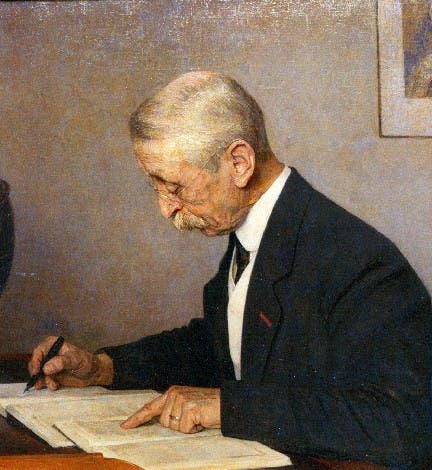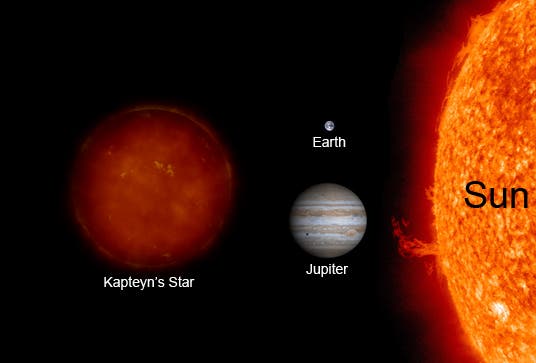Scientist of the Day - Jacobus Kapteyn
Jacobus Kapteyn, a Dutch astronomer, was born Jan. 19, 1851. Kapteyn worked at Groningen in the Netherlands, and he spent much of his life counting stars and measuring their magnitudes and proper motions, with a goal of determining the shape and size of the Galaxy. He concluded after decades of work that the Galaxy was about 30,000 light-years across and perhaps 10,000 light-years thick, with the Sun not too far from the center. His model of the universe came to be called the Kapteyn universe. We have most of his published papers in our serials collection, including his last one that appeared in the Astrophysical Journal in 1922. The diagram below, showing the density of stars as one moves away from the Galactic center, is taken from that 1922 paper.
Unfortunately, at the time Kapteyn was concluding his work, an American, Harlow Shapley, determined, by measuring the distance to the globular clusters that surround the galactic core, that the Galaxy is at least 100,000 light-years across, with the sun 2/3 of the way out toward the rim. The problem with Kapteyn’s measurements was that he (and everyone else) was unaware of the light-absorbing properties of interstellar dust, which threw off all his distance determinations. It was as if the universe he was measuring was foggy, and he did not know it. It was not until 8 years later (1930) that Robert Trumpler showed that interstellar absorption of light has to be taken into account when measuring stellar distances. By that time, Kapteyn had been dead for 8 years.
Kapteyn’s other claim to fame, this one also undercut but for different reasons, was discovering the fastest moving star known, which came to be called Kapteyn’s star. In 1897, he was looking for a star in the constellation Pictor in the southern skies that had been catalogued, but which he could not locate in recent photographs. He asked a colleague in South Africa to look for it, and the star was not where it was supposed to be, but there was another, uncatalogued, some distance away, and it became evident that this was the same star, shooting through the sky at the rate of some 8 seconds a year, which was the largest proper motion ever detected. Kapteyn’s star is a red dwarf star, much smaller than our Sun, as you can see in an artist’s comparison (third image). Unfortunately for Kapteyn fans, another astronomer, E.E. Barnard, recorded an even faster moving star in 1916, and Barnard’s star is now the star with the largest proper motion, with Kapteyn’s star in second place.
Kapteyn’s star, however, recently returned to the news. In 2014, two habitable planets were discovered orbiting Kapteyn’s star, named, glamorously, Kapteyn b and Kapteyn c. This is of interest because Kapteyn’s star is a halo star, meaning it is outside the plane of the Milky Galaxy, and therefore an extremely old star, so that its planets are also extremely old. Indeed, right now Kaptyen b is the oldest exoplanet we have discovered, about 11 billion years in age (see artist’s conception of Kapteyn b, fourth image). That is plenty of time for lots of civilizations to have come and gone. This fact motivated science fiction author Alastair Reynolds to write a short-short story, “Sad Kapteyn,” which you can read online in just a couple of minutes, during which time Kapteyn’s star will have moved hardly at all. Dr. William B. Ashworth, Jr., Consultant for the History of Science, Linda Hall Library and Associate Professor emeritus, Department of History, University of Missouri-Kansas City. Comments or corrections are welcome; please direct to ashworthw@umkc.edu.









